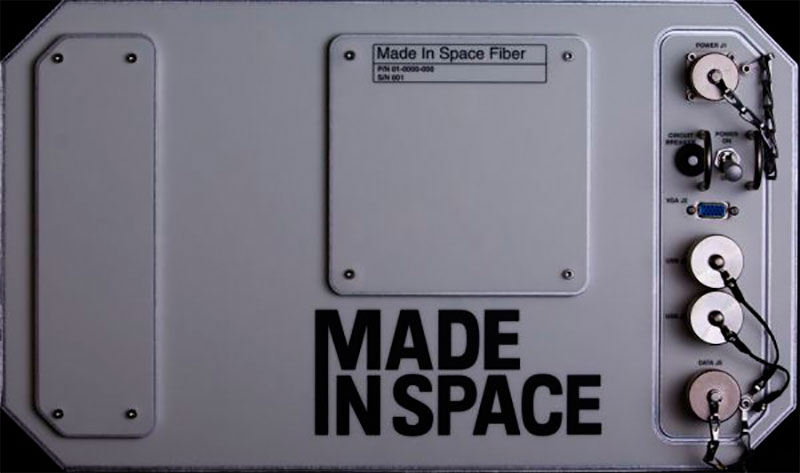
Unitsky String Technologies


 |
Unitsky String Technologies |


|
Site news
|
3 August 2016 |
|
Space production: advantages, prospects, problems Space for Earth In mid-July 2016 the portal TechCrunch, covering news of high technologies, announced that the American company Made in Space - operator of the only 3D printer in the world installed in space (ISS) - plans to start pilot production of optical fiber in microgravity conditions. Compared to the traditional method of information transmission - electrical impulses passing through copper wire, - optical fiber is much more effective. However, if produced in terrestrial conditions, it also has shortcomings associated with the gravity effect, under the influence of which undesirable impurities and crystal formations appear in the material. These defects, nonremovable on Earth, cause signal degradation, which is especially noticeable when it is broadcast over long distances. This significantly limits the scope of optical fiber application and creates a problem that can be solved only by shifting production into space. 
Space for Space The benefits of space production become even more evident while creating devices designed to operate in this environment. The assembly of such equipment under the conditions of its further operation (zero gravity and extreme vacuum), can significantly facilitate calibration. In addition, due to zero gravity you don't care about special designs that are used to hold equipment suspended at the assembly stage. The lack of spatial limits and weight provide the opportunity to build objects of any size. Moreover, the lack of atmosphere reduces the consumption of materials and depreciation of production equipment by many criteria, in particular, corrosion and increases its durability. Projects of industry relocation into space appeared long ago, in the nineteenth century, particularly, in the works of the Russian scientist Konstantin Tsiolkovsky, but only recently they started being worked out with all due care. A vivid example - a publication in the Journal of Astronomical Telescopes, Instruments, and Systems of a detailed plan to build a hundred-meter modular space telescope of robotic assembly (RAMST). One of the most promising technological solutions that could enable to arrange industrial production in space is the 3D printing. A number of materials that can be used for three-dimensional printing does not require oxygen for cooling and solidification. The possibility of large-scale use of such materials is studied by NASA's SpiderFab project - creation of a 3D printer that could print huge metal frameworks in the open space. Such framework could subsequently function as a platform, on which they would mount other elements of the stations, probes, satellites, etc., delivered from Earth. Such technology would be indispensable also in case, if the humanity was going to build colonies on the planets without atmosphere. Its only drawback, even in theory, is that building materials would still have to be delivered from Earth. 
Do our desires match our capabilities? It seems that the Earth's industry is approaching the limits of its capabilities. It is quite natural that this happens primarily in the areas of information transmission technologies, power industry, heavy industry and cosmonautics, the development of which is at the forefront of technological progress. Space has unlimited production resources lacking on the planet: zero gravity, extreme vacuum, inexhaustible sources of renewable energy and mineral resources, infinite space, etc. Space exploration is no longer romanticism, but a sort of business, in which investments come not only from Governments, but also from large corporations such as DST Global, USM Holdings, S7 Airlines, Virgin Group, Facebook, Google, Amazon.com and others. The list of benefits from space manufacturing is enormous. Only one, the most important question remains unsolved - "how?". Not long ago Jeff Bezos, the founder of Amazon.com stated the necessity to transfer all heavy industry into space. "This is the best planet. We must protect it," he said. According to Bezos, production requiring large energy consumption should not be located on Earth, as its reserves here are limited. In space solar energy is available continuously and in unlimited quantity. It would seem that everything is right and the time for decisive actions has come. However, generally speaking, such declarations are unfounded, as they do not have a real technical ground. The vehicle, which could deliver a sufficient quantity of cargo to the orbit to arrange there a large-scale production - is simply absent. And then, there comes to mind by itself an elegant and simple from an engineering point of view solution proposed by the Soviet engineer Anatoly Yunitskiy almost forty years ago - a General Planetary Vehicle (GPV). The GPV is able to deliver millions of tons of cargo and millions of passengers in the near space by one trip in the most environmentally friendly way (the so-called "principle of Baron Munchausen") and with the highest comfort, while reducing cost of geocosmic transportation by several thousand times in comparison to the boosters. It is obvious that the time for GPV has come. Forty years ago, this technology seemed to many merely a fancy of a theoretical mind. Today it is a practical necessity. |
|
© 1977—2016 Anatoly Yunitskiy. All Rights Reserved. |
||